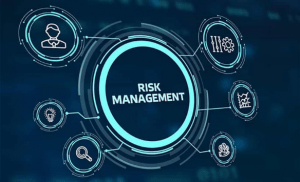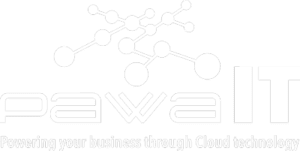Businesses and organizations are constantly seeking ways to stay competitive and meet the ever-evolving needs of their customers. One critical aspect of this pursuit is infrastructure modernization, which involves updating and optimizing the underlying technology, systems, and processes that support an organization’s operations. However, along with the benefits of modernization, come various risks that must be assessed and addressed to ensure a smooth transition and long-term success.
We delve into the risk assessment and mitigation strategies your organization should consider during infrastructure modernization. We will focus on identifying potential risks, conducting a risk impact analysis, and exploring effective mitigation efforts.
Identifying Potential Infrastructure Modernization Risks
Before embarking on any infrastructure modernization initiative, it is essential to identify potential risks that could arise during the process. Some of the key risks include:
- Data Security and Privacy: One of the most significant risks associated with infrastructure modernization is the potential for data breaches or unauthorized access to sensitive information. As organizations modernize their systems, they may inadvertently introduce vulnerabilities that malicious actors can exploit.
- Vendor Lock-in: Adopting certain technology solutions or platforms during modernization can lead to vendor lock-in. This situation occurs when an organization becomes overly dependent on a single vendor for critical services or support, limiting its ability to switch providers or negotiate favorable terms.
- Integration Challenges: Modernizing infrastructure often involves integrating new systems with existing ones. Integration complexities can arise, leading to data inconsistencies, compatibility issues, and process disruptions.
- Cost Overruns: Underestimating the budget required for modernization projects is a common risk. Unexpected costs can arise during implementation, leading to financial strain and potential project delays.
- Business Disruptions: The process of infrastructure modernization can temporarily disrupt business operations, affecting productivity and customer service.
- Skills Gap: Introducing new technologies may require employees to acquire new skills or undergo training. A lack of necessary expertise within the organization can lead to implementation challenges and hinder the realization of expected benefits.
Conduct a Risk Analysis
After identifying potential risks, the next step is to conduct a risk impact analysis. This analysis entails evaluating the seriousness and potential effects of every risk and successfully prioritizing mitigation activities.
- Data Security and Privacy: A data breach can have severe consequences, including financial losses, damaged reputations, and legal liabilities. The impact analysis should evaluate the likelihood of a breach and the potential harm caused to the organization and its stakeholders.
- Vendor Lock-in: Vendor lock-in can limit an organization’s flexibility and bargaining power, leading to higher costs and reduced innovation. Assessing its impact involves evaluating the criticality of the services provided by the vendor and the feasibility of switching to alternative providers.
- Integration Challenges: Integration issues can disrupt operations and lead to data inconsistencies, affecting decision-making and the customer experience. The impact analysis should focus on the extent of potential disruptions and their duration.
- Cost Overruns: An overrun in the project budget can strain the organization’s financial resources and hinder other strategic initiatives. The impact analysis should consider the magnitude of the budget deviation and its effect on the overall financial health of the organization.
- Business Disruptions: Business disruptions can result in lost revenue, dissatisfied customers, and diminished market competitiveness. The impact analysis should gauge the extent of the disruption and its recovery time.
- :Skills Gap: A lack of necessary skills can delay project timelines and impede the successful implementation of modernization efforts. The impact analysis should evaluate the availability of relevant skills and their influence on project milestones.
Mitigation Efforts
After conducting the risk impact analysis, organizations can develop comprehensive mitigation strategies to address and minimize the identified risks effectively. Here are some mitigation efforts for each of the key risks:
- Data Security and Privacy:
- Implement robust encryption and access controls to safeguard sensitive data.
- Conduct regular security audits and vulnerability assessments to identify and address potential weaknesses.
- Educate employees about data security best practices and the importance of protecting sensitive information.
- Consider data anonymization and pseudonymization techniques to minimize the risks associated with data exposure.
- Vendor Lock-in:
- Prioritize the use of open standards and interoperable technologies to avoid excessive dependence on a single vendor.
- Include clear exit clauses in vendor contracts to ensure a smooth transition to alternative providers, if needed.
- Conduct thorough vendor evaluations to choose partners with a track record of reliability and flexibility.
- Integration Challenges:
- Plan and execute comprehensive integration testing before deploying new systems to identify and resolve potential issues early on.
- Establish clear communication channels between IT teams and departments affected by integration to facilitate swift problem-solving.
- Utilize middleware and integration tools to streamline the process and minimize compatibility challenges.
- Cost Overruns:
- Conduct a detailed cost estimation and risk analysis before commencing the modernization project.
- Set aside contingency funds to account for unforeseen expenses that may arise during the implementation phase.
- Regularly monitor the project’s financial status and adjust resource allocation accordingly to avoid cost overruns.
- Business Disruptions:
- Develop a robust business continuity plan to address potential disruptions and minimize their impact on critical operations.
- Implement a phased approach to modernization, ensuring that essential business functions are not significantly affected simultaneously.
- Communicate transparently with stakeholders about potential disruptions and the organization’s strategies to manage them.
- Skills Gap:
- Identify skill gaps within the organization and provide training and upskilling opportunities to employees.
- Consider partnering with external consultants or hiring specialized contractors to fill skill gaps during critical phases of the modernization project.
- Foster a culture of continuous learning and innovation to ensure that the organization remains adaptable to evolving technology landscapes.
Conclusion
Infrastructure modernization presents exciting opportunities for organizations to enhance efficiency, innovate, and maintain competitiveness in the dynamic business landscape. However, these endeavors also carry inherent risks that must be diligently addressed. By identifying potential risks, conducting thorough impact analyses, and implementing effective mitigation strategies, organizations can significantly increase the likelihood of successful modernization projects. Moreover, a proactive approach to risk assessment and mitigation not only safeguards against potential setbacks but also paves the way for a seamless and transformative modernization journey.








